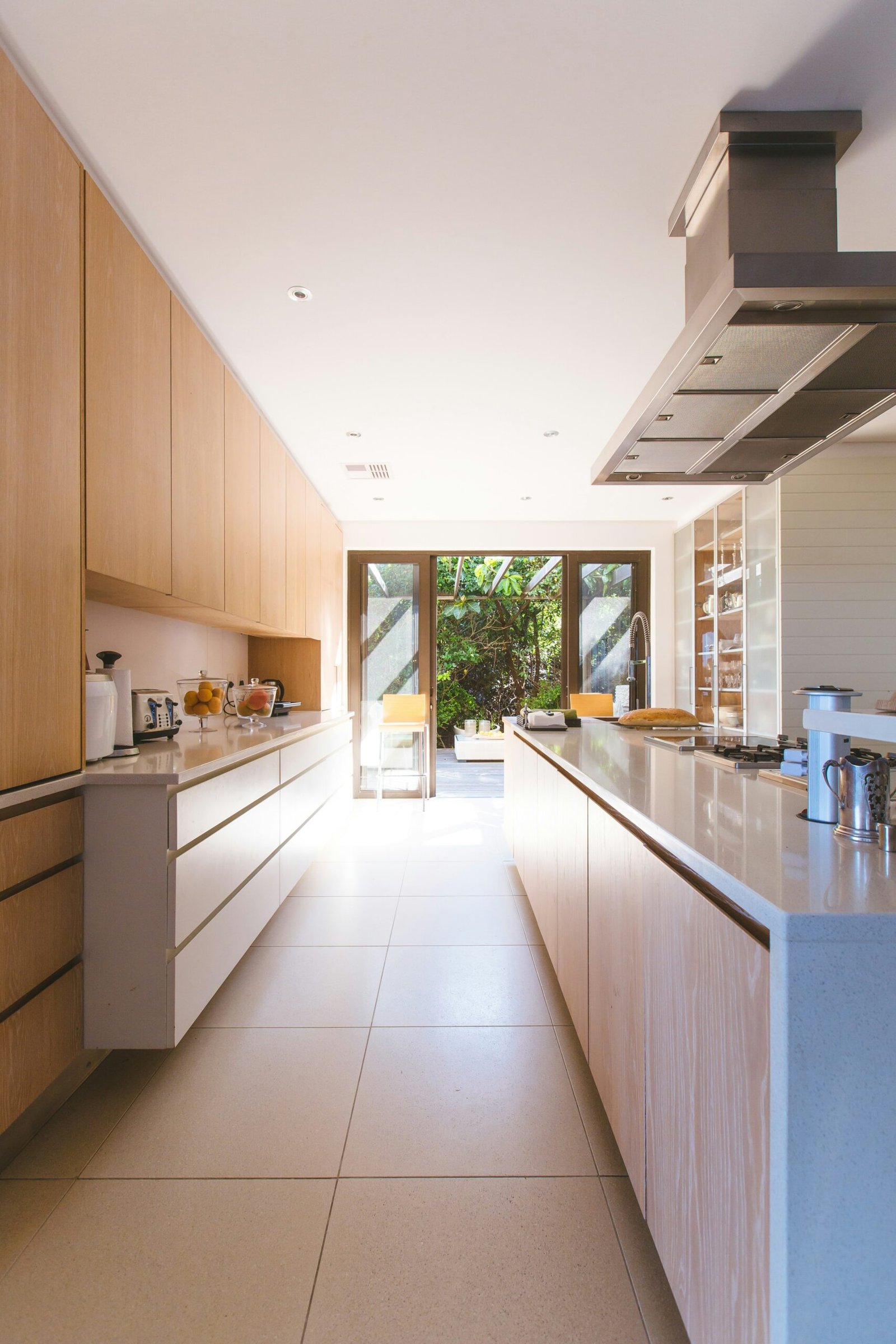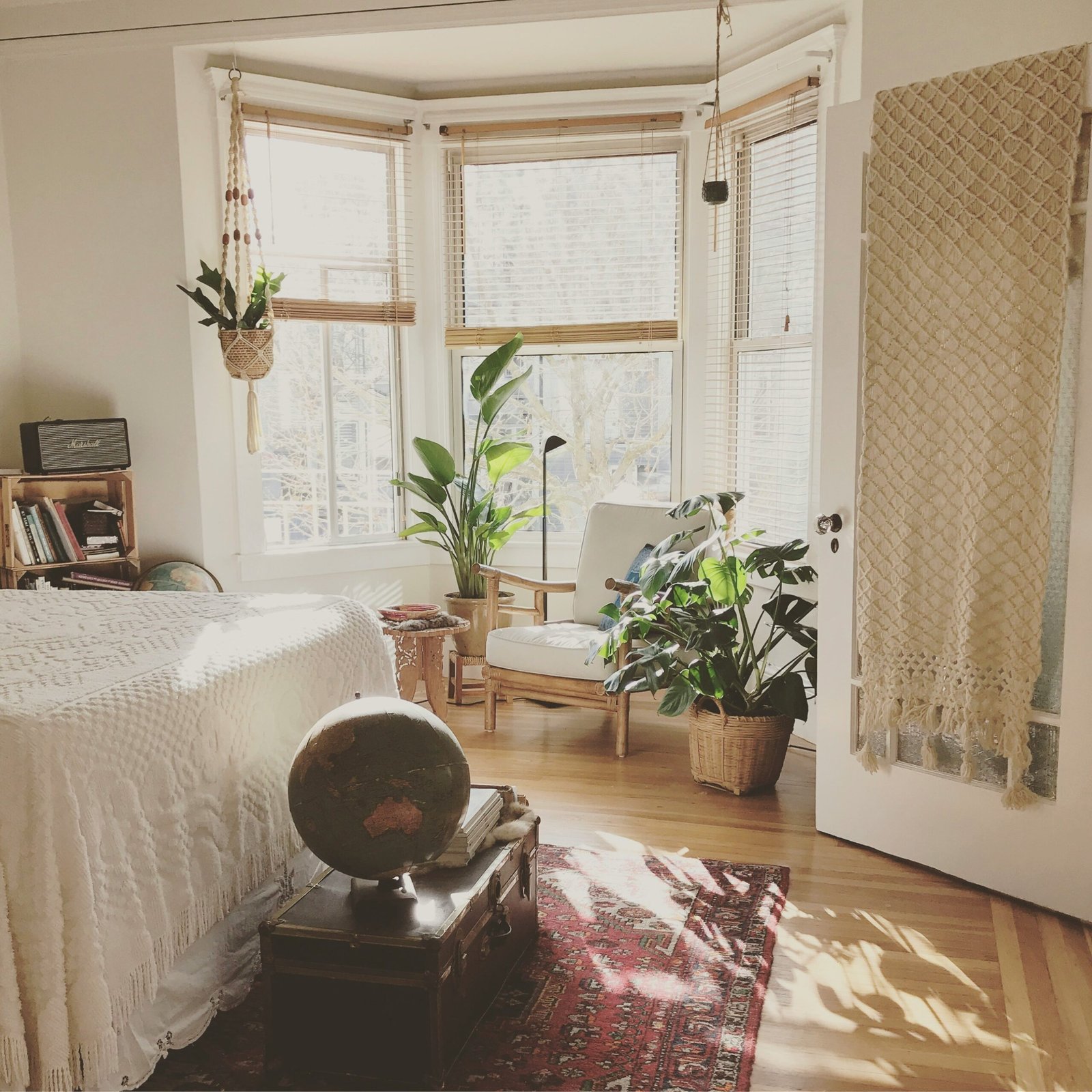Introduction to Kitchen Vastu
Vastu Shastra, an ancient Indian science of architecture and design, plays a significant role in creating harmonious living spaces. It emphasizes the importance of aligning a building’s structure, layout, and design with the natural elements and cosmic energies. Among various areas of the home, the kitchen holds a special place because it is considered the heart of the house. The kitchen is not merely a functional space; it is where nourishment is prepared and shared, having a profound impact on health and well-being.
The principles of Vastu Shastra suggest that the arrangement, design, and location of the kitchen can significantly influence the physical and emotional health of those who dwell within the home. According to Vastu guidelines, the optimal placement of the kitchen should be in the southeast corner of the house, which is associated with the fire element. Incorporating this fundamental aspect of kitchen design assists in promoting a balanced space that enhances positive energy flow, encouraging good health and happiness.
Furthermore, the role of the kitchen extends beyond culinary practices; it embodies values of family togetherness and harmony. In Vastu, the kitchen serves as a gathering point for family members to share meals, strengthening bonds and enhancing social well-being. It is recommended that the cooking area is kept clean and well-organized, allowing for a smooth workflow and promoting a serene atmosphere conducive to nutritious meal preparation.
Vastu also highlights the importance of natural light and ventilation in the kitchen. Properly designed kitchens not only allow for efficient cooking but also create an uplifting environment that supports positive interactions among family members. By integrating Vastu principles into kitchen design, individuals can experience improved nutrition, elevated moods, and overall well-being within their homes.
The Ideal Location of the Kitchen
In the realm of Vastu Shastra, the kitchen holds significant importance, as it is considered the heart of the home, contributing not only to sustenance but also to the well-being and happiness of the family. The ideal positioning of a kitchen plays a crucial role in maintaining a harmonious living environment. It is widely accepted that the Southeast direction is the most favorable for a kitchen, particularly regarding the placement of the cooktop. This orientation is believed to harness the energy of Agni, the fire element, symbolizing health and vitality.
According to Vastu principles, the kitchen should ideally be located in the Southeast to ensure that the cook faces either East or North while preparing food. This orientation facilitates a positive atmosphere, enhances focus during meal preparations, and encourages auspicious energy flow. Moreover, positioning the kitchen in this direction can enhance the cooking experience and promote a sense of well-being among family members.
Conversely, kitchens located in the Northwest or South may lead to disharmony and health issues within the family. Such placements can create unnecessary tensions and disharmony, ultimately impacting the overall family dynamics. Careful consideration of the kitchen’s location in accordance with Vastu can significantly influence physical health, emotional stability, and the overall happiness of the household.
In addition to direction, it is essential to be mindful of the kitchen’s proximity to other areas, such as the dining room and living spaces. This strategic arrangement can ensure smooth movement and interaction among family members during meal times, fostering warmth and togetherness. Therefore, adhering to Vastu guidelines for kitchen placement not only aligns with traditional practices but also promotes a healthy and harmonious home environment.
Color Schemes and Materials in Vastu Kitchen Design
In Vastu Shastra, the selection of appropriate colors and materials for the kitchen plays a crucial role in fostering an atmosphere of health and happiness. The colors chosen for your kitchen should not only be aesthetically pleasing but should also promote a sense of warmth and positivity. Warm colors such as shades of yellow, orange, and beige are often recommended, as they are thought to enhance the kitchen’s energy and stimulate appetite. These colors can create an inviting and vibrant environment, making the kitchen a welcoming space for family gatherings and meal preparations.
In addition to warm colors, it is beneficial to incorporate earthy tones like green and light brown. These shades are associated with nature and can lend a serene quality to the kitchen, creating a balance that is ideal for cooking and family interactions. Moreover, incorporating natural light into the kitchen design enhances the positive energy created by these colors, thus augmenting the overall well-being of the inhabitants.
💰 Powerful Spells for Wealth & Prosperity
Attract money, success, and financial abundance with real magic spells that bring results fast.
When it comes to materials, Vastu encourages the use of natural substances such as wood, stone, and ceramic. Wood, particularly in cabinetry and countertops, not only provides durability but also adds warmth to the space. Opting for eco-friendly materials can further enhance the positive vibrations in the kitchen. Stone surfaces, like granite or marble, offer a timeless aesthetic and are practical for cooking areas, while ceramic tiles are ideal for flooring due to their easy maintenance and variety of designs.
As a combination, the right color schemes and materials collectively contribute to a harmonious Vastu kitchen design that encourages health and happiness. Engaging with these elements mindfully can greatly influence the mood of cooking and dining spaces, making them more conducive to nurturing relationships and promoting overall wellness.
Placement of Kitchen Elements and Appliances
The layout of a kitchen significantly influences its overall functionality, safety, and the well-being of its users. To harness the positive energy in accordance with Vastu principles, it is essential to carefully consider the placement of key kitchen elements such as the sink, stove, refrigerator, and storage. Each of these components plays a unique role in the kitchen’s dynamic and can either promote good health or hinder it based on their positioning.
According to Vastu Shastra, the ideal location for the kitchen stove is in the southeastern corner of the room. This placement is associated with the fire element, as it not only promotes efficient cooking but also contributes to a balanced energy flow. When the stove is positioned appropriately, it ensures that the person cooking faces east, thereby allowing them to harness maximum positive energy during the meal preparation process.
The sink should ideally be positioned in the northeast portion of the kitchen. This aligns with the water element, which is vital for hygiene and cleanliness. The sink’s proper location enhances functionality and safety by ensuring that water flows freely, preventing stagnation and inadvertently promoting better health. It is also essential to maintain a clear separation between the stove and the sink to avoid any conflicting energies that may arise from these two elements.
Refrigerators, as storage appliances, should be placed in the western or southwestern parts of the kitchen. This positioning ensures that the colder energy of the refrigerator does not disrupt the warmth emanating from the stove. Additionally, ample storage should be available and should always be organized to promote ease of access. By implementing these guidelines, one can create a kitchen environment that supports not only culinary endeavors but also the health and happiness of those who use it.
Natural Light and Ventilation in Kitchen Vastu
In the realm of Kitchen Vastu, the significance of natural light and proper ventilation is paramount for fostering a positive and healthful environment. Natural light is a vital source of energy that can uplift the mood of those who spend time in the kitchen, positively influencing both mental well-being and food preparation experiences. Incorporating ample windows into the kitchen design aligns with Vastu principles, as it encourages the free flow of sunlight, which is essential for maintaining an energetic and vibrant cooking space.
To maximize the benefits of natural light, it is advisable to position windows on the eastern or northern walls. This ensures that the kitchen is bathed in sunlight during the morning hours, promoting an inviting atmosphere. Additionally, using reflective surfaces such as mirrors or light-colored cabinetry can help to amplify the illumination from natural light sources, thus enhancing the overall brightness of the kitchen.
Equally important to natural light is the aspect of ventilation. Proper airflow helps to dissipate cooking odors, smoke, and moisture, thereby contributing to a healthier cooking environment. According to Vastu, kitchens should ideally be located in the southeast direction of the home, which allows for effective cross-ventilation. Installing exhaust fans or openable windows that can effectively channel out stale air can significantly improve air quality. It is also beneficial to incorporate plants, as they not only purify the air but also add a touch of serenity and tranquility to the kitchen environment.
By effectively combining natural light and proper ventilation in accordance with Vastu principles, homeowners can create a kitchen that promotes health and happiness. This approach enhances the culinary experience and nurtures well-being, creating a space that is not just functional but also spiritually uplifting.
💰 Powerful Spells for Wealth & Prosperity
Attract money, success, and financial abundance with real magic spells that bring results fast.
Incorporating Plants and Greens in the Kitchen
Integrating plants and greenery into kitchen design is not merely an aesthetic choice; it plays a crucial role in enhancing both health and happiness. In Vastu Shastra, the incorporation of plants is believed to promote positive energy and a harmonious environment. Certain plants are particularly auspicious and can be beneficial for kitchen spaces. For instance, basil (Tulsi) is revered for its spiritual significance and its ability to purify the air. Similarly, rosemary is known not only for its culinary use but also for its distinctive aroma that stimulates mood and reduces stress.
Moreover, incorporating greens in the kitchen does not only align with Vastu principles but also has numerous health benefits. Indoor plants improve air quality by filtering toxins and releasing oxygen, which can significantly enhance the overall kitchen ambiance. Plants like spider plants and peace lilies are known for their air-purifying properties, creating a healthier cooking environment. Additionally, having herbs within reach encourages the use of fresh ingredients, promoting healthier cooking practices.
The placement of plants also holds importance in Vastu. It is recommended that plants be positioned in the eastern or northern sections of the kitchen to invite positive energy. Hanging or shelf-mounted herb gardens can be particularly effective in utilizing vertical space while keeping fresh greens accessible for culinary use. Indoor vegetable gardens are also gaining popularity, as they allow individuals to grow their herbs, contributing to a sustainable kitchen practice.
Ultimately, the incorporation of plants and greenery into the kitchen not only adheres to the principles of Vastu but also enriches the living space. By fostering a connection with nature, kitchens can transform into areas that promote wellness, comfort, and creativity, aligning well with the overall goal of enhancing health and happiness in the home.
Decluttering and Maintaining Kitchen Vastu
One of the fundamental aspects of achieving a Vastu-compliant kitchen involves the process of decluttering. A tidy and orderly kitchen aligns with Vastu principles, allowing for the free flow of positive energy. Clutter can create a chaotic atmosphere that not only affects the physical space but also influences mental clarity and overall health. Therefore, a systematic approach to organizing and maintaining a clean kitchen is essential.
To begin with, it is recommended to regularly assess the items in your kitchen. Discard any expired food products, broken utensils, or items that are seldom used. This not only helps in reducing clutter but also makes space for items that are functional and beneficial. When displaying kitchen items, consider using transparent containers to showcase your essential spices and ingredients, allowing for easy access while also keeping the aesthetic appealing.
Another effective strategy is to arrange your kitchenware according to frequency of use. Place everyday items within easy reach, while less frequently used appliances can be stored in less prominent spaces. This organization contributes to a more serene cooking environment, which is vital for mental well-being. Maintaining this orderliness will foster positive energy and promote a sense of calm, ultimately energizing the cooking experience.
Furthermore, incorporating natural elements such as plants can enhance the kitchen’s Vastu compliance. Herbs not only improve the air quality but also contribute to a healthier culinary practice. Ensure regular maintenance, which includes cleaning counter spaces and removing clutter promptly, to sustain the Vastu energy flow. By prioritizing decluttering and thoughtful organization, you create a kitchen space that not only promotes health but also happiness, embodying the true essence of Kitchen Vastu principles.
Creating a Harmonious Kitchen Environment
The kitchen is often the heart of the home, where meals are prepared and families gather to share experiences. To create a harmonious kitchen environment, it is essential to focus not only on the physical layout but also on the emotional connections fostered through shared culinary experiences. Integrating family involvement in cooking can significantly enhance the atmosphere, adding layers of joy and connection.
Encouraging family members to participate in meal preparation can transform the kitchen into a lively space filled with laughter and collaboration. Assigning specific tasks that suit each person’s abilities can cultivate a sense of contribution and teamwork. For instance, children may enjoy washing vegetables while adults can manage cooking techniques. This collaborative approach nurtures relationships and builds a sense of belonging, which is crucial for overall happiness in the household.
Incorporating mealtime rituals can further enrich the kitchen experience. Establishing a regular family dinner can create a sanctuary where family members can relax and share their thoughts. A beautifully set table can enhance the ambiance, while shared meals allow for meaningful conversations, reinforcing emotional bonds. It is important to view these moments not just as daily routines, but as opportunities to connect and create lasting memories.
In addition, ensuring that the kitchen is well-organized and aesthetically pleasing can positively impact the mood of those who use it. Bright colors, adequate lighting, and thoughtful decor can contribute to an uplifting atmosphere. Consider integrating plants or artwork that resonate with family members, as these personal touches can imbue the space with warmth and harmony.
By focusing on family involvement and establishing heartfelt rituals, a kitchen can evolve from a mere functional area into a nurturing environment that fosters health and happiness for all its users.
Conclusion: Embracing Vastu for a Healthier Home
In revisiting the essential concepts outlined in this discussion on Kitchen Vastu, it is imperative to acknowledge the significant role that Vastu principles can play in fostering health and happiness within the household. The kitchen is not merely a space for food preparation; it serves as the heart of the home, where nourishment and emotional wellbeing converge. By adhering to Vastu guidelines, homeowners can create an environment that promotes not only physical health but also a sense of harmony and balance.
Key elements such as the strategic placement of the kitchen in the home, proper orientation of cooking appliances, and the selection of colors and materials are vital considerations. The incorporation of natural light and ventilation further enhances the positive energy within the kitchen. These aspects collectively contribute to a supportive environment that encourages healthy eating habits and family bonding. Moreover, by utilizing materials that align with Vastu principles, one can achieve both aesthetic appeal and functionality, promoting an atmosphere of happiness and serenity.
Embracing these principles is ultimately about nurturing a household that thrives on wellness and positive energy. Vastu not only shapes the physical aspects of our living spaces but also influences our mental and emotional states. Therefore, by thoughtfully integrating Vastu concepts into kitchen design, one can cultivate a space that not only nourishes the body but uplifts the spirit, leading to greater overall life satisfaction.
In conclusion, the journey toward a healthier home begins with recognizing the importance of Vastu in our lives. As homeowners, making conscientious choices based on these principles will lead to a more balanced and prosperous kitchen, crafting an inviting atmosphere that enriches our wellbeing.







